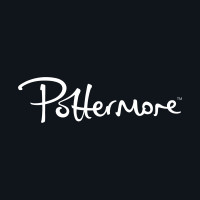
Philosopher’s Stone introduced us to the trolls of the wizarding world: they’re big, brutish and more than a little bit stupid. But trolls were in (fictional) existence long before Harry’s wand got stuck up the nostril of that particularly nasty one in the girls' bathroom. So, where exactly do they come from?
Beasts or beings?
The Fantastic Beasts and Where to Find Them textbook, written by J.K. Rowling as Newt Scamander, describes a troll as ‘a fearsome creature up to twelve feet tall and weighing a tonne’. They originated in Scandinavia, Newt explains, and they are strong, unpredictable creatures with a propensity towards violence and stupidity.
In fact, the stupidity of trolls is what caused them to be officially listed as beasts, after early wizarding attempts at classification identified ‘any member of the magical community that walked on two legs’ as a ‘being’, distinct from the ‘beasts’ that flew or crawled on four legs.
According to Fantastic Beasts, trolls were used by goblins to demonstrate how absurd this method of classification was. When it was later overturned, the trolls’ lack of understanding was key to their being termed ‘beasts’.

Scandinavian roots
Strong, unpredictable, stupid and violent – these are all traits that are true of the trolls of mythology. Trolls did originate in Scandinavia, with early fairy tales like ‘The Three Billy Goats Gruff’ gradually embedding them in popular culture.
Early history
The word ‘troll’ first appeared in 1276, when Norway’s King Magnus Haakonsson created a set of laws that made it illegal to wake the trollish ‘mound dwellers’, which were actually the graves of early pagan ancestors buried in mounds of earth. Worshipping these ancestors was a practice that the Christian elite of Norway were keen to stamp out. King Magnus’s creation of these laws included the first written record of the word ‘troll’, and so trolls became associated with the Scandinavian pagans of the thirteenth century.
But the word has an even longer history. In early Norse folklore, ‘trolleri’ referred to a particular type of magic that was designed to do harm, and it can also be traced back to early German words meaning giant, monster or fiend.

Habitat
The trolls of mythology were monstrous, but although they have been linked to a race of Norse giants known as ‘jötnar’ they weren’t always huge. In the southern Scandinavian countries they were often depicted as small, mysterious, cave-dwelling creatures.
The trolls of early folklore have as many different habitats as they do variations in appearance. Some stories have them living in mountains, others in caves, or in forests. So when Newt identifies three types of troll in the Fantastic Beasts textbook: mountain, forest and river – his description has its roots in existing myths.
Appearance
From ancient myth to modern fiction, trolls have always been ugly. The Danish ballad ‘Eline of Villenskov’ includes a line that describes trolls as ‘both ugly and grim’ and this has filtered through to our popular culture.
Alternative interpretations
There have been other visual interpretations of trolls. The Swedish name for Finnish author Tove Jansson’s Moomins is ‘Mumintroll’, because those popular, white hippopotamus-like creatures also have roots in the old fairytales – although the peaceful Moomins are nothing like the destructive creatures of the wizarding world.
And, in 1959, a Danish woodcutter called Thomas Dam created a plastic doll with a wrinkled face and upcombed hair. His creations became known as Troll dolls, and the 2016 animated film Trolls brought them back to popular attention.
Like Moomins, Dam’s trolls aren’t scary or particularly stupid, which just goes to show that even folklore’s most monstrously magical creatures can, with a bit of help, change their reputation.

There are no such reputational makeovers for the trolls of the wizarding world. The best we can say for the two that Harry, Ron and Hermione encounter in Philosopher’s Stone is that at least they caused no harm, thanks to Ron’s wand and Quirrell’s special affinity with their kind.
It’s not exactly high praise. Best stick to Newt’s definition in Fantastic Beasts.



